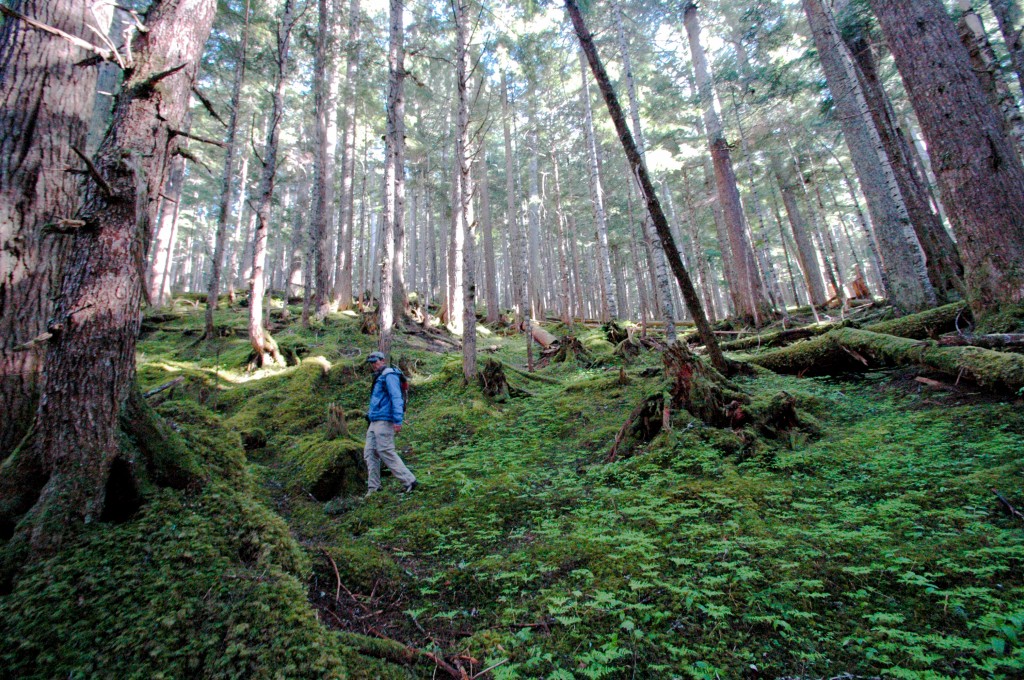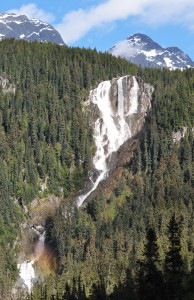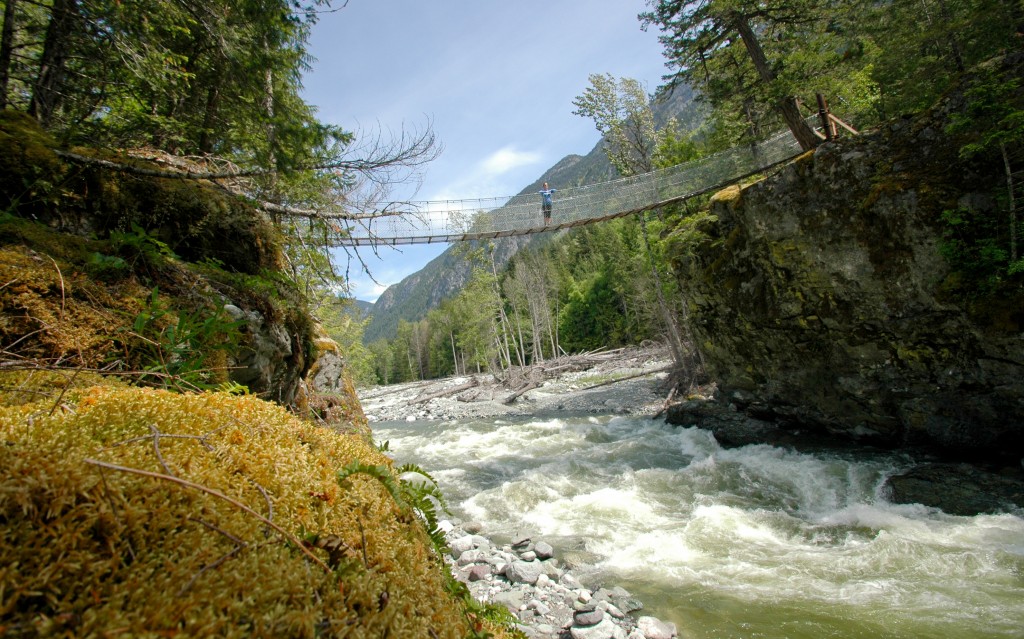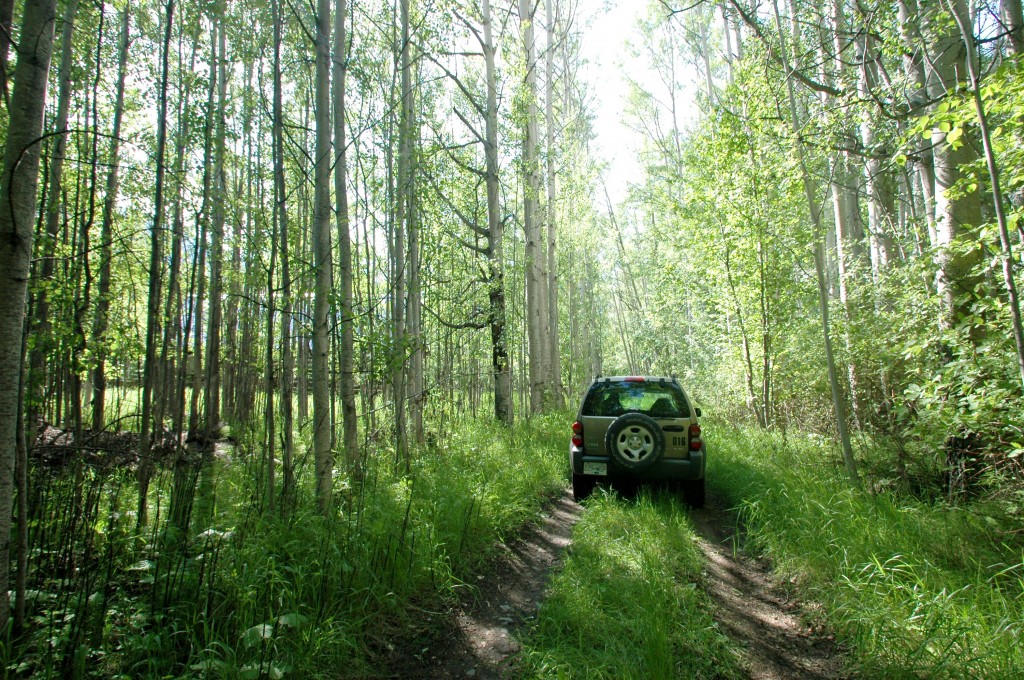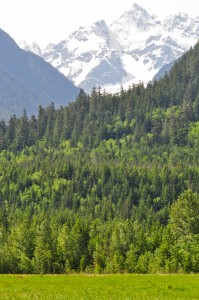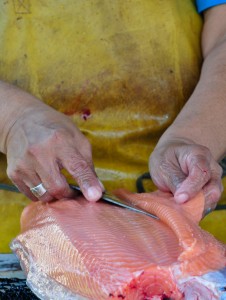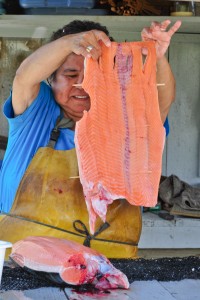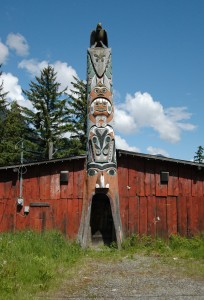We’ve been hiking around the Bella Coola valley (searching for bears of course – lots of scat, but still no luck) and I’m continually struck by the diversity of the Great Bear Rainforest.
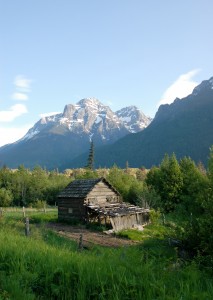 The convergence of factors: coastal mountains, heavy rainfall, lush valleys, alpine terrain and rivers chock full of spawning salmon all create one of the most bio diverse regions on earth.
The convergence of factors: coastal mountains, heavy rainfall, lush valleys, alpine terrain and rivers chock full of spawning salmon all create one of the most bio diverse regions on earth.
If you drive inland only twenty or thirty miles, it feels like you’ve entered a completely different part of the world.
We’ve been told that in the spring, the bears head for the coast, feeding on grass (they graze like cows), muscles and kelp. In midsummer they disperse into the hills to eat berries, flowers and whatever else they can find. Bear viewing really kicks off in the fall when they return to the valley to feed on spawning salmon. This is when you see the famous shots of bears gorging themselves and snatching fish from the shallows.
Apparently late August to September are the prime tourist months. Until then, you can practically have this fabulous terrain to yourself as we’ve been learning.
We spent an entire day in Tweedsmuir Provincial Park yesterday and never saw a single person. Mind you, the road that travels through this park is the main access road to Bella Coola and yet we saw a grand total of three vehicles.
We’ve met several First Nations people in the valley – many of them descendants of those who’ve lived here for 10,000 years. Here, Lorriane Tallio demonstrates the traditional method of cutting salmon for smoking. It’s paper thin and will hang for several days while smoked with alder wood.
